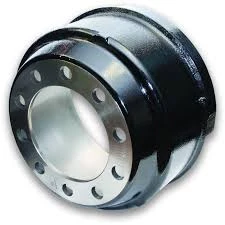
-
 Afrikaans
Afrikaans -
 Albanian
Albanian -
 Amharic
Amharic -
 Arabic
Arabic -
 Armenian
Armenian -
 Azerbaijani
Azerbaijani -
 Basque
Basque -
 Belarusian
Belarusian -
 Bengali
Bengali -
 Bosnian
Bosnian -
 Bulgarian
Bulgarian -
 Catalan
Catalan -
 Cebuano
Cebuano -
 Corsican
Corsican -
 Croatian
Croatian -
 Czech
Czech -
 Danish
Danish -
 Dutch
Dutch -
 English
English -
 Esperanto
Esperanto -
 Estonian
Estonian -
 Finnish
Finnish -
 French
French -
 Frisian
Frisian -
 Galician
Galician -
 Georgian
Georgian -
 German
German -
 Greek
Greek -
 Gujarati
Gujarati -
 Haitian Creole
Haitian Creole -
 hausa
hausa -
 hawaiian
hawaiian -
 Hebrew
Hebrew -
 Hindi
Hindi -
 Miao
Miao -
 Hungarian
Hungarian -
 Icelandic
Icelandic -
 igbo
igbo -
 Indonesian
Indonesian -
 irish
irish -
 Italian
Italian -
 Japanese
Japanese -
 Javanese
Javanese -
 Kannada
Kannada -
 kazakh
kazakh -
 Khmer
Khmer -
 Rwandese
Rwandese -
 Korean
Korean -
 Kurdish
Kurdish -
 Kyrgyz
Kyrgyz -
 Lao
Lao -
 Latin
Latin -
 Latvian
Latvian -
 Lithuanian
Lithuanian -
 Luxembourgish
Luxembourgish -
 Macedonian
Macedonian -
 Malgashi
Malgashi -
 Malay
Malay -
 Malayalam
Malayalam -
 Maltese
Maltese -
 Maori
Maori -
 Marathi
Marathi -
 Mongolian
Mongolian -
 Myanmar
Myanmar -
 Nepali
Nepali -
 Norwegian
Norwegian -
 Norwegian
Norwegian -
 Occitan
Occitan -
 Pashto
Pashto -
 Persian
Persian -
 Polish
Polish -
 Portuguese
Portuguese -
 Punjabi
Punjabi -
 Romanian
Romanian -
 Russian
Russian -
 Samoan
Samoan -
 Scottish Gaelic
Scottish Gaelic -
 Serbian
Serbian -
 Sesotho
Sesotho -
 Shona
Shona -
 Sindhi
Sindhi -
 Sinhala
Sinhala -
 Slovak
Slovak -
 Slovenian
Slovenian -
 Somali
Somali -
 Spanish
Spanish -
 Sundanese
Sundanese -
 Swahili
Swahili -
 Swedish
Swedish -
 Tagalog
Tagalog -
 Tajik
Tajik -
 Tamil
Tamil -
 Tatar
Tatar -
 Telugu
Telugu -
 Thai
Thai -
 Turkish
Turkish -
 Turkmen
Turkmen -
 Ukrainian
Ukrainian -
 Urdu
Urdu -
 Uighur
Uighur -
 Uzbek
Uzbek -
 Vietnamese
Vietnamese -
 Welsh
Welsh -
 Bantu
Bantu -
 Yiddish
Yiddish -
 Yoruba
Yoruba -
 Zulu
Zulu
do drum brakes need to be bled
Do Drum Brakes Need to Be Bled?
When it comes to vehicle maintenance, many car owners may overlook the complexity involved in the braking system. Among the various components of this critical system, drum brakes have a unique design and functionality that is essential for effective stopping power. One common question regarding drum brakes is whether or not they need to be bled. In this article, we will explore the purpose of bleeding brakes, the specific considerations for drum brakes, and best practices for ensuring your braking system operates smoothly.
Understanding Brake Bleeding
Bleeding brakes is a process that removes air bubbles from the brake lines, ensuring that brake fluid can effectively transmit force to the brake components when you press the brake pedal. Air in the brake lines can lead to a spongy brake pedal feel and reduced braking efficiency, which can significantly affect vehicle safety.
Do Drum Brakes Need to Be Bled?
Yes, drum brakes, like disc brakes, can also require bleeding, especially after certain maintenance activities. Here are some scenarios where bleeding might be necessary
1. Brake Fluid Change When the brake fluid is changed, old fluid is drained from the system, and fresh fluid is added. Air can enter the brake line during this process, necessitating bleeding.
2. Brake Component Replacement If you replace any components in the braking system, such as the wheel cylinders or the brake master cylinder, bleeding should be performed to ensure no air is trapped inside the system.
3. Routine Maintenance If you notice a spongy brake pedal or decreased braking performance, bleeding the brakes may help eliminate air in the system.
Bleeding Drum Brakes
Bleeding drum brakes is a bit different from bleeding disc brakes
. Here’s a step-by-step guidedo drum brakes need to be bled

1. Gather Your Tools You will typically need a brake bleeder kit, which includes a wrench and a collection bottle to catch old brake fluid.
2. Locate the Wheel Cylinder Each drum brake has a wheel cylinder behind the drum, responsible for expanding the brake shoes when the brakes are applied.
3. Prepare the Vehicle Loosen the lug nuts on the wheel where you're bleeding the brakes, lift the vehicle with a jack, and remove the wheel.
4. Locate the Bleeder Valve The bleeder valve is a small screw found on the wheel cylinder. It often has a rubber cap; remove this cap first.
5. Attach the Bleeder Kit Connect the clear hose from your bleeder kit to the bleeder valve, ensuring the other end of the hose is in the collection bottle.
6. Bleeding Process Have an assistant pump the brake pedal several times and hold it down. Open the bleeder valve to let the fluid and any trapped air escape. Close the valve before your assistant releases the brake pedal. Repeat this process until you see a steady stream of fluid without bubbles.
7. Check Brake Fluid Levels Throughout this process, keep an eye on the brake fluid reservoir. Fill it as necessary to prevent introducing more air into the system.
8. Reassemble Everything Once finished, replace the rubber cap on the bleeder valve, reattach the wheel, and tighten the lug nuts.
Conclusion
Maintaining an effective braking system is critical for vehicle safety, and understanding the need to bleed drum brakes is an important part of that maintenance. Whether you’re changing brake fluid, replacing components, or performing routine checks, being proactive in your brake maintenance can prevent potential issues and ensure a safe driving experience. If you're unsure about the process, consider consulting a professional mechanic to ensure that your braking system remains in top shape.
-
What Are Drum BrakesNewsJul.07,2025
-
Understanding Brake Drum MaterialNewsJul.07,2025
-
Semi-Trailer Brake Drum: A Key Component for Extreme Loads and Long-Distance TransportNewsJul.07,2025
-
Drum Brake Pads for SaleNewsJul.07,2025
-
Brake Drums for SaleNewsJul.07,2025
-
Brake Drum ManufacturerNewsJul.07,2025
-
Aluminum Brake Drums: The Future of High-Performance CarsNewsJul.07,2025
